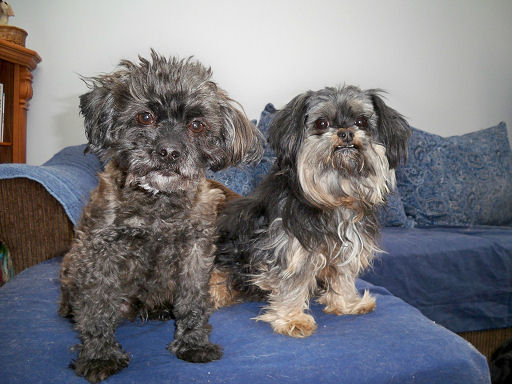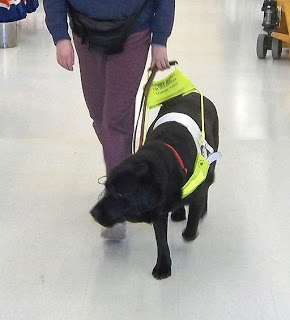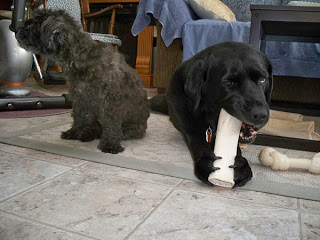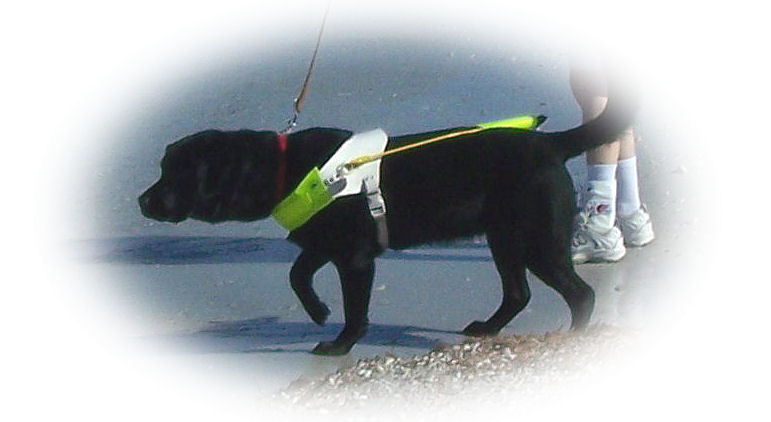I have been told that watching a guide dog team on the street is pretty amazing. Folks see a dog and handler at a street corner waiting for their turn to cross the street. The light turns green and the pair set off and make it to the other side with flawless accuracy for the curb. I am told that it looks like the dog is the one doing all the work. In reality, it’s really a team effort.
Being a handler, it’s really my responsibility to know when it’s safe to cross the street and to know what direction we are to go. In fact, it’s something we have to prove we can do even before we are considered for a dog. The dog’s responsibility is to walk the straight line across the street and then stop at the corner to indicate we have crossed. Sounds simple enough right? In practice, not so much lol.
After I learned to follow the pull with Shasta, I had to then learn how to walk in a straight line with her. Even with some vision this was quite challenging. I had no idea I didn’t really walk in a true straight line until I had to follow Shasta. I would drift out away from her and or too close to her causing her to drift to the left. She did her best to hold the straight line, but I had to learn to catch myself from drifting.
I began to really notice the drifting when we moved away from the school and started training around the downtown area. The trainer kept on prompting me to go straight and asked me to tell the dog “straight”. On the residential sidewalks it was easier because I had the grass on both sides of the sidewalk to highlight the edges of the sidewalk. In the down town area, I didn’t have that. This forced me to rely on Shasta a lot more and she on me. To complicate this even further, there were obstacles in the way. Sometimes Shasta needed to weave me in and out of an area where there were objects on the sidewalk, like chairs or a bike parked along the side walk. I had to learn when to rely on Shasta and just follow along.
Curbs were a whole different ball game. There are no real markers to help me see when I am going in a true straight line, so I need to learn to feel when I am drifting. sometimes the dog can drift too so I had to learn to catch that. So basically, I used the residential areas to learn how to go straight and feel what it’s like to go in a true straight line. Then in the town areas I learned to feel the difference between a drift and a broken straight line when Shasta had to weave with me in and out of something. At the curbs I just put all that together and we learned to walk across a curb like pro’s after a couple of weeks of practice.
In class, at least I wasn’t the only one in the same predicament with the straight line issue. We all were going through it. At the end of each walk the trainer would give each of us pointers, both in private and in a group, so we would know that we were all in the same boat.



